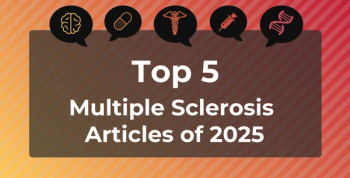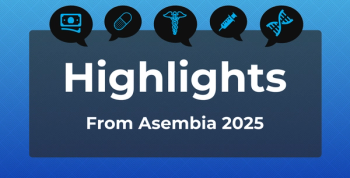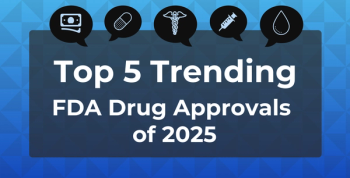
FDA Issues CRL for Bevacizumab Used for Wet AMD
Key Takeaways
- The FDA's complete response letter highlights insufficient efficacy evidence for bevacizumab-vikj in treating wet AMD, despite previous safety confirmations.
- NORSE EIGHT study failed its primary endpoint, but later data showed noninferiority to ranibizumab, with a mean BCVA difference of –1.009 letters.
This marks the second complete response letter (CRL) received by Outlook Therapeutics for its treatment targeting wet age-related macular degeneration (AMD).
The FDA has issued a new complete response letter (CRL) to the biologics license application resubmission seeking approval for bevacizumab-vikj (ONS-5010; Outlook Therapeutics, Inc.) to treat wet age-related macular degeneration (AMD),1 a late stage of the condition that causes faster loss of vision.2
“While we are very disappointed with this outcome, we intend to meet with the FDA to receive additional clarity on their requirements to potentially approve the first on-label bevacizumab product specifically formulated, manufactured, and packaged for intravitreal use in the United States,” said Bob Jahr, CEO of Outlook Therapeutics.1
Bevacizumab (Avastin), which is FDA approved to treat cancer, has been used off label to treat wet AMD,3 but there is currently no bevacizumab product approved for this indication.
The FDA issued the CRL due to lack of evidence that supported the efficacy of the therapy. The study, NORSE EIGHT, which evaluated the efficiency of the drug, did not meet its primary end point at 8 weeks. Later data found that bevacizumab-vikj was noninferior to ranibizumab after 12 weeks,4 with a mean difference of best corrected visual acuity (BCVA) of –1.009 letters. The mean change in BCVA was +5.5 letters in the bevacizumab-vikj compared with +6.5 letters in ranibizumab-vikj. This study provided the backbone of the new biologics license application submitted by Outlook Therapeutics.
The FDA acknowledged that the NORSE TWO phase 3 study had met its efficacy end point in the past. The trial had enrolled 228 patients diagnosed with wet AMD across the US.5 The medication was given monthly and was compared with ranibizumab. The primary end point after 11 months was the proportion of patients who gained at least 13 letters in a test for BCVA, with the mean change in BCVA being the secondary end point.
At the end of 11 months, 41.7% of the patients gained 15 letters or more, 56.5% gained 10 letters or more, and 68.5% gained 5 letters or more. The mean gain in letters was 11.2 for patients using bevacizumab-vikj.
Bevacizumab-vikj was found to be safe in both trials. NORSE TWO reported 1 ocular inflammatory adverse event across all 3 registration trials which was resolved. Minimal ocular inflammation and safety signals were also reported. NORSE EIGHT reported that all adverse events were comparable to ranibizumab.
Despite these results, the FDA requires more evidence of efficacy be submitted for any future resubmissions for FDA approval.1 Bevacizumab-vikj has previously been approved for use in the EU and the UK, making it the only authorized ophthalmic formulation of bevacizumab for use in wet AMD in those regions.
Wet AMD is the less common type of AMD and is a late-stage form of the condition caused by abnormal blood vessels grow in the back of the eye and cause damage to the macula. A symptom of wet AMD is straight lines looking wavy or crooked; also, a blurry area near the center of the vision can appear. AMD can also happen very slowly, making regular eye doctor appointments vital for detecting the condition in time to be treated. Wet AMD has been treated through anti–vascular endothelial growth factor injections and photodynamic therapy.
“We remain committed to providing patients with a safe and effective alternative to compounded Avastin manufactured in the United States,” said Jahr.1
References
1. Outlook Therapeutics provides regulatory update on U.S. Food and Drug Administration review of ONS-5010/LYTENAVA™ (bevacizumab-vikg) for the treatment of wet AMD. News release. Outlook Therapeutics. August 28, 2025. Accessed August 28, 2025.
2. Age-related macular degeneration (AMD). National Eye Institute. Updated June 22, 2021. Accessed August 28, 2025.
3. Turbert D. What is Avastin? American Academy of Ophthalmology. Accessed August 28, 2025.
4. Outlook Therapeutics announces complete twelve week efficacy and safety results of NORSE EIGHT clinical trial. News release. Outlook Therapeutics. January 16, 2025. Accessed August 28, 2025.
5. Outlook Therapeutics presents NORSE TWO phase 3 pivotal safety and efficacy data for ONS-5010/LYTENAVA™ (bevacizumab-vikg) at the Retina Subspecialty Day, American Academy of Ophthalmology (AAO) 2021 Annual Conference. News release. Outlook Therapeutics. November 13, 2021. Accessed August 28, 2025.
Newsletter
Stay ahead of policy, cost, and value—subscribe to AJMC for expert insights at the intersection of clinical care and health economics.







































